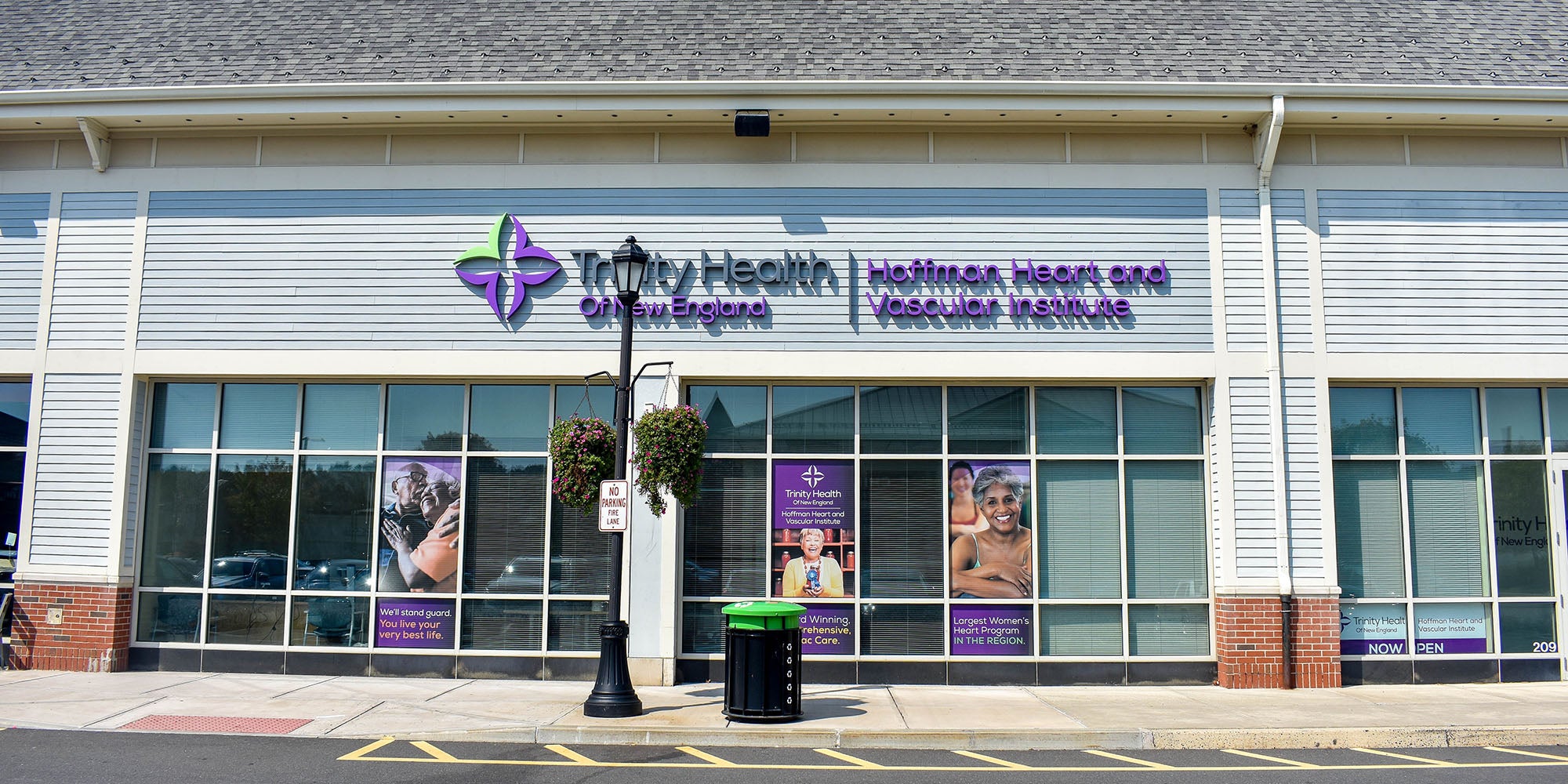Diagnostic Testing
Contact UsTrinity Health Of New England specializes in catheter-based procedures that can diagnose and treat blocked or damaged blood vessels. Interventional cardiologists insert a catheter (thin, flexible tube) in a small incision in the groin or wrist to access the heart and blood vessels. Advances in vascular procedures have made it possible for patients to get fast, effective vascular disease treatment that can prevent a heart attack or other cardiovascular emergencies. There are heart and vascular specialists available throughout Connecticut and western Massachusetts.
Trinity Health Of New England is recognized as being among the fastest “door-to-balloon” times for heart attack care in Connecticut. Door-to-balloon time is a time measurement that starts with a patient’s arrival to the Emergency Department and ends with the initiation of treatment with balloon angioplasty. Angioplasty is a procedure used to open blocked coronary arteries (arteries that supply the heart with blood).
The highly skilled cardiologists at Trinity Health Of New England are experts at diagnosing and treating cardiovascular disease with the use of a catheter into a blood vessel that leads to the heart. Below are a few options for catheter-based testing.
Cardiovascular Angiography
An atherectomy is a cardiac procedure that is done to remove plaque from a coronary artery. The plaque is removed with tiny rotating blades or a laser on the end of a catheter. This allows successful placement of a balloon and stent to re-open the artery.
Cardiac catheterization, or heart catheterization, is a procedure that provides detailed pictures of how blood is moving through the coronary arteries. The coronary arteries provide blood and oxygen to the heart. An angiogram allows the cardiologist to see blockages within the coronary arteries. If there are blockages in the arteries, the heart may not be receiving the right amount of blood and oxygen. A heart catheterization is also used to examine how well the heart is functioning. A catheter (a thin, hollow tube) is inserted into a large blood vessel that leads to the heart.
- Left heart catheterization is a procedure performed to look for coronary artery disease or heart valve disease
- Right heart catheterization allows clinicians to measure pressures in the heart, which provides valuable information for diagnosis and treatment.
Percutaneous Coronary Intervention (PCI)
A growing number of patients with coronary artery disease (CAD) find themselves in need of a coronary artery stent or coronary artery bypass graft surgery but have been told that they are at high risk for complications that may occur. The interventional cardiologists at Trinity Health Of New England have demonstrated outstanding clinical outcomes using this advanced catheter-based procedure to open blocked coronary arteries in high-risk patients. After undergoing CHIP, patients often experience dramatic improvement in symptoms, improved quality of life and fewer hospital admissions.
Several factors may lead to a patient being considered high-risk and a candidate for CHIP, including:
- Advanced age
- History of kidney disease, stroke or diabetes
- Challenging types of coronary plaque include calcified or long lesions
- Previous open-heart surgery
- Advanced heart failure
Coronary angioplasty - is a procedure that opens narrowed coronary arteries and is performed by interventional cardiologists. Angioplasty uses a special catheter (a thin, flexible tube) with a small balloon at its tip. The catheter is carefully guided through the artery to the blockage. The balloon is then inflated to widen the narrowed artery and increase blood flow to the heart. This procedure is also known as balloon angioplasty.
Another option is to place a stent (a small, metal mesh tube) in a blocked artery to keep it open after the balloon is removed.
Fractional flow reserve measures a change in pressure within the coronary artery and detects a decrease in blood flow that is lost because of a narrowing in the artery.
A catheter guides a tiny camera into the coronary artery to provide a picture of the location and extent of the fatty deposits called plaque.
Heart Support Devices
The Impella device is a tiny heart pump used to support the heart during high-risk cardiac interventions or it is used for patients in cardiogenic shock related to heart failure. This is a temporary device used only in the hospital.
A small sensor that is permanently placed in the pulmonary artery and monitors heart and lung pressures. The sensor records a daily pressure reading, which is then wirelessly transmitted to heart failure specialists for review. These pressures alert providers when patients have early signs of worsening heart failure and provide prompt treatment. This system decreases the need for patient clinic visits and hospitalizations.


